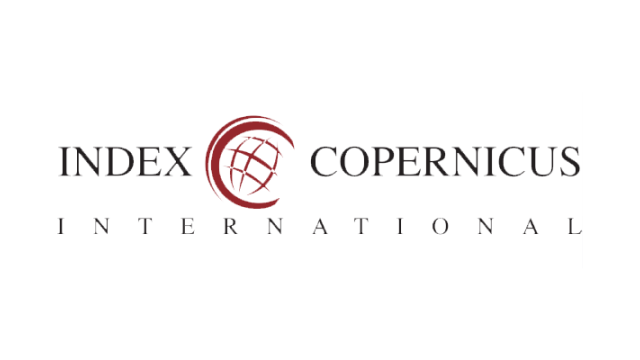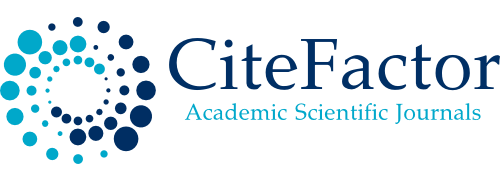STUDENTS’ LEARNING STYLES AND PREFERRED TEACHING STYLES IN PHILIPPINE CLASSROOM
DOI:
https://doi.org/10.61841/z93yhj43Keywords:
Learning Styles,, Teaching Styles,, Foreign students,, Philippine classroom, diversityAbstract
This study determines and analyzes foreign students' learning styles, preferred teaching styles and the challenges they encountered while studying in the Philippines. The study uses Descriptive method to describe the current state of the phenomenon involved in the process. Specifically, Sequential Mixed Approach was utilized to analyze the data through surveys and qualitative interpretation. This study used Purposive sampling to gather respondents based on the purposes of the study, whereas Convenience Sampling was used to choose the respondents according to their availability during the data gathering procedure. The result of the study reveals that most of the respondents are visual learners. Thus, the learning styles have no significant difference when grouped according to profile. Majority of the male respondents preferred Delegator as their preferred teaching style than female. Also, language, teachers, and cultural differences are regarded as the top three challenges of the foreign students while studying in the Philippines. Thus, it is recommended for the foreign students to develop their learning styles and to explore other learning styles so that they may have wide-range knowledge on learning. On the other hand, the teachers may understand that the goal of teaching is learning, therefore, it is suggested that teachers need to cater the differences and the diversity inside the classroom to create a productive learning environment.
Downloads
References
1. Aning, J. (2011, August 21). Philippines has 26k foreign students. Inquirer [Manila]. Retrieved from: http://globalnation.inquirer.net/9781/philippines-has-26k-foreign-students
2. Armstrong, A. (2014, September 05).Problems that can be faced by International students. Retrieved from StudentCompetitions.com: http://studentcompetitions.com/posts/problems-that-can-be-faced-by- international-students.
3. Brown, B. (2003). Teaching Style vs. Learning Style. Educational Resources Information Center 26, Retrieved from: http://www.calpro-online.org/eric/docs/mr41.pdf
4. Claxton, C. S. & Murrell P. H. (1988). Learning Styles. ERIC Clearinghouse on Higher Education Washington DC. Retrieved from http://eric.ed.gov/?id=ED301143
5. Grasha, A.F. (1984). Learning styles: The journey from Greenwich Observatory to the college classroom: Improving College and University Teaching
6. Juntarciego, G., Maderazo, R. L., Malipero, L., &Masalunga, S. (2014, January-March). The Academic Experiences of Undergraduate International Thomasian Students.2(1). Manila, Philippines: International Journal of Thesis Projects and Dissertations .
7. Lucas, R. I., Miraflores, E., & Go, D. (2011).English Language Learning Anxiety among Foreign Language Learners in the Philippines. Philippine ESL Journal.
8. Montgomery, S. &Groat, L. (1998).Student Learning Styles and their Implications for Teaching. CRLT Occasional Papers. Retrieved from: http://edit.www.uaa.alaska.edu/cafe/newfaculty/upload/CRLT_no10.pdf
9. Ouane, A. (2003). Towards a Multilingual Culture of Education. Hamburg, Germany. UNESCO Institute for Education.
10. Oxford, R. (1995). The Role of Styles and Strategies in Second Language Learning. ERIC Clearing House on Languages and Linguistics Washington D.C. Retrieved from http://www.ericdigests.org/pre- 9214/styles.htm
11. Sawal, A., Cagas, C. & Padilla, A. (n.d.).Foreign Students' Social Adjustment and it's Relationship to their Academic Performance.
12. Sicat, R. (2011). Foreign Students' Cultural Adjustment and Coping Strategies. International Conference on Social Science and Humanity. Retrieved from: http://www.ipedr.com/vol5/no2/74-H10195.pdf
13. Tas, M. (2003). International Students: Challenges of Adjustments to University Life in U.S. International Journal of Education , 1-9.
14. Thomas et al. (2000).Relating Preferred Learning Style to Student Achievement.(Doctoral Dissertation).International Pacific College.Palmerston North, New Zealand.Retrieved from: https://archive.org/details/ERIC_ED445513
15. Prajapati ST, Patel LD, Patel CN. "Polymers for Floating Drug Delivery System." Systematic Reviews in Pharmacy 2.2 (2011), 1-7. Print. doi:10.4103/0975-8453.83431
16. Pozhhan,M.,Rok,E.R.,Jafarsoltani (2016). Evaluation of DFIG placement on small signal stability in multi- machine power systems. International Academic Journal of Science and Engineering, 3(3), 119-132.
17. Alborji,B. (2016). Feed water system’s optimization in thermal power plants (case study) by vector control inverters. International Academic Journal of Science and Engineering, 3(3), 133-143.
18. Upadhyaya, M. People's geographical behaviour: The influence of social media usage on shoppers' buying intentions (2018) Journal of Research on the Lepidoptera, 50 (2), pp. 81-97.
19. Calhoun, J.V., Wright, D.M. Remarks on the recent publication of Titian R. Peale's "lost manuscript," including new information about Peale's Lepidoptera illustrations (2016) Journal of Research on the Lepidoptera, 49 (1), pp. 21-51.
Downloads
Published
Issue
Section
License

This work is licensed under a Creative Commons Attribution 4.0 International License.
You are free to:
- Share — copy and redistribute the material in any medium or format for any purpose, even commercially.
- Adapt — remix, transform, and build upon the material for any purpose, even commercially.
- The licensor cannot revoke these freedoms as long as you follow the license terms.
Under the following terms:
- Attribution — You must give appropriate credit , provide a link to the license, and indicate if changes were made . You may do so in any reasonable manner, but not in any way that suggests the licensor endorses you or your use.
- No additional restrictions — You may not apply legal terms or technological measures that legally restrict others from doing anything the license permits.
Notices:
You do not have to comply with the license for elements of the material in the public domain or where your use is permitted by an applicable exception or limitation .
No warranties are given. The license may not give you all of the permissions necessary for your intended use. For example, other rights such as publicity, privacy, or moral rights may limit how you use the material.









